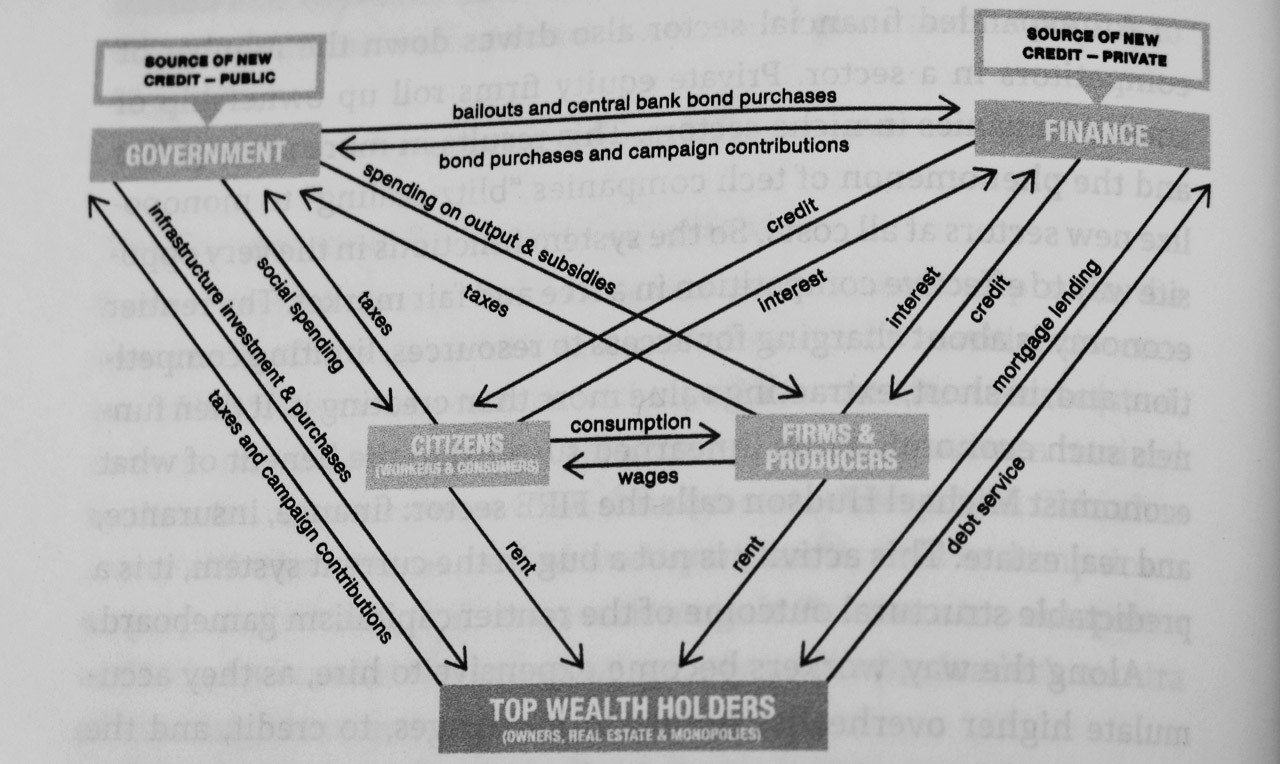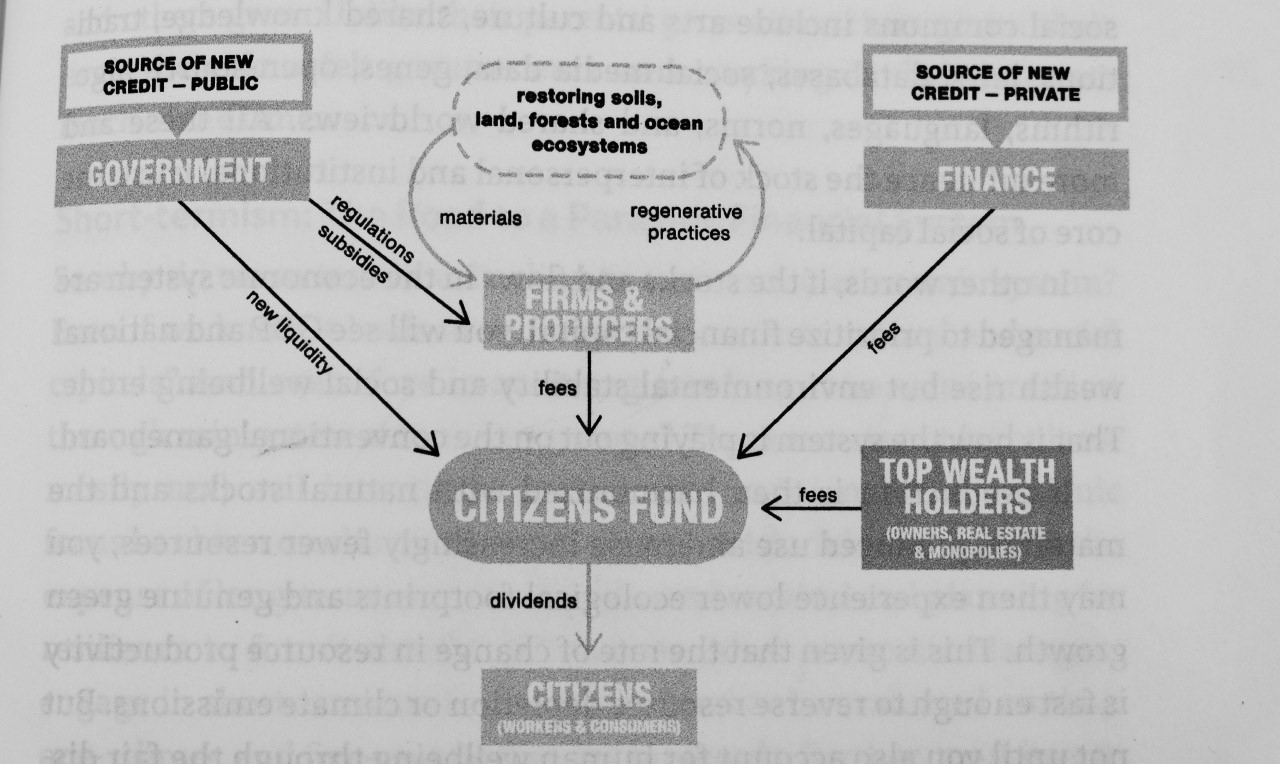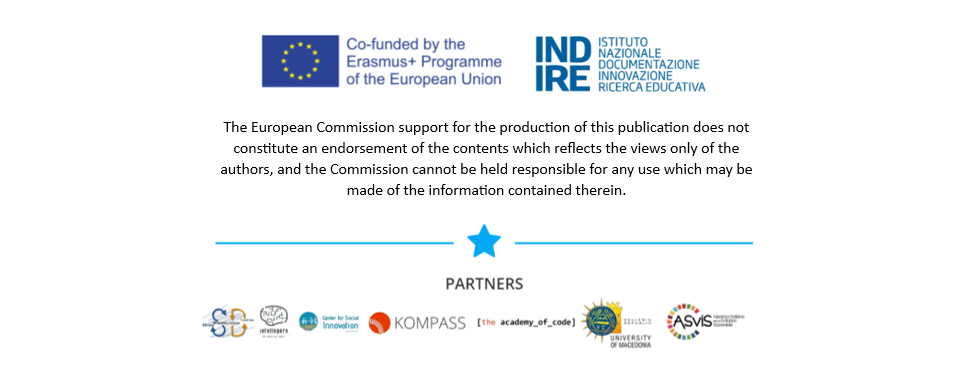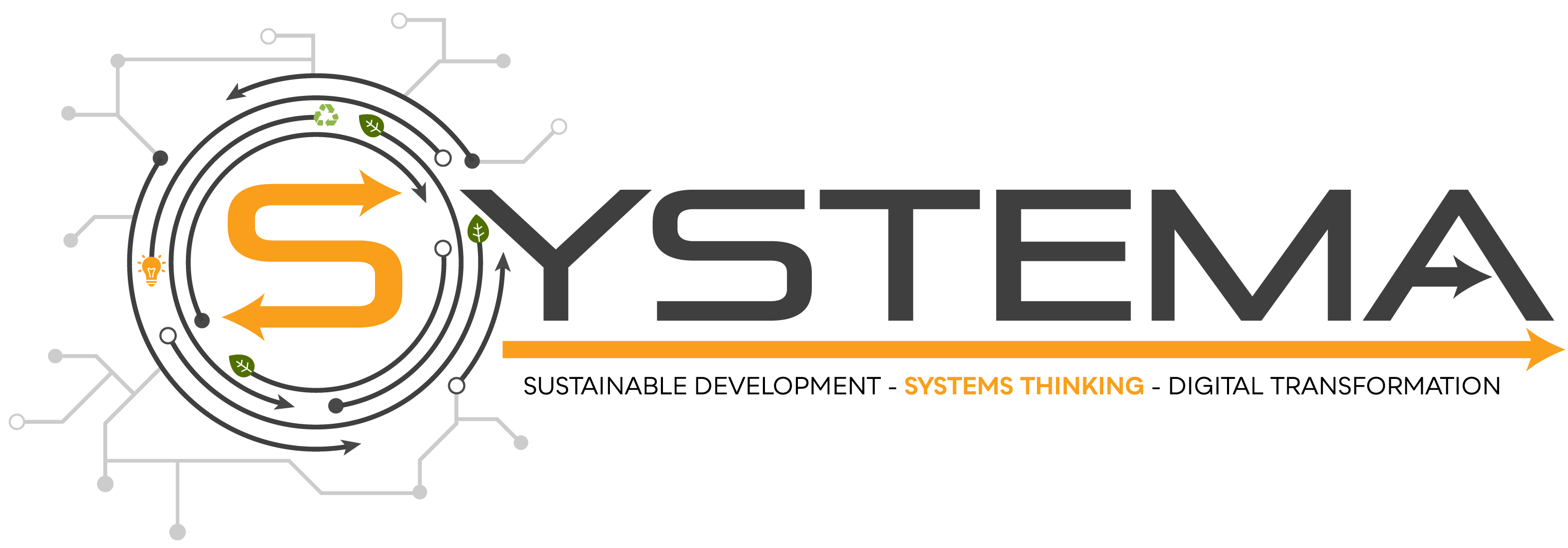A brief synthesis and comment on the systemic approach of the proposal of the report to the Club of Rome 'Earth for All’, on how to change our economic system to address the challenges of our time.
50 years after the publication of the first report to the Club of Rome 'The Limits to Growth', which triggered the planetary debate on the impossibility of material, quantitative and unlimited growth for mankind in an Earth with clear biogeophysical limits, the latest report 'Earth for All - A Survival Guide for Humanity' (published in September 2022) clearly explains why a 'giant leap' through systemic changes for the whole of humanity is urgently needed,
At chapter 8 of the report entitled “from Winners Take All to Earth4All economies”is presented an analysis of the actual economic system and in which way it produces inequality and environmental degradation.
The systemic process that is at work in today’s economic system, correspond to the archetype known as “Success to the Successful” as it was well described by Donella Meadows in the book “Thinking in system”.
We’re in a system trap where the winners receive, as part of the reward, the means to compete even more effectively in the future. That’s a reinforcing feedback loop, which rapidly divides a system into winners who go on winning, and losers who go on losing. That’s why inequalities have risen and are still rising in the world.
Authors of “Earth for All” analyse how today’s economic system works and illustrated it in a gameboard (see figure 1).
Figure 1
The gameboard shows where money comes from and how it travels trough the economy.
At the top right is the private money making tree: the secret of banking is that money is created out of noting, as credit each time a new loan is made.
On the top left is the public money making tree available to any government with a sovereign economy but absent from many country with a weak or or non-sovereign currency.
At the bottom of the graph we find the top wealth holder - the owner of existing monopolies and existing assets (such as real estate, intellectual properties, mineral resources). They are in intimate alliance with the creator of credit (at top right of the graph). Creator of credits and top wealth holders are the winner in today’s economy.
In today’s economic system, nature - our main common good - is ignored. So we are also in “the tragedy of the commons” trap, that is another typical archetipe of system thinking (also well illustrated by Donella Meadows in the quoted “Thinking in system”). If nature - the invisible source of wealth - is not valued, it’s easy to ignore so it I can be easily destroyed.
Figure 2
The report propose a solution redrawing the gameboard (see figure 2) moving three systemic leverage point:
1. Create a citizen fund to distribute universal basic dividend generated form fees on wealth extraction and use of shared commons. That adds another money tree to the to the board: nature;
2. Regulating finance to invest in strategies that address inequalities, climate change and other crisis, channelling prixeate money away from fossil fuels and unsustainable agriculture and towerd clean evergy and regenerative practises. To makes this happen government takes a stronger role as regulator and citizen start viewing themselves as a public whose future is worth investing in.
3. Cancellation of unfair debt. As authors underlines cancelling $900 billion in international debt burdening low-income countries could free up spending that addresses post-covid poverty and replenishes or sustain resources. Such a move would affect almost a billion people.
We can appreciate that this system shift is consistent with 2015 Paris agreement on
climate climate change (art.2.1-c):
making finance flows consistent with a pathway towards low greenhouse gas emissions and climate-resilient development.
And also consistent with Council of the European Union in Conclusions adopted at 22 June 2021 on a comprehensive approach to accelerate the implementation
of the UN 2030 Agenda for sustainable development – Building back better from
the COVID-19 crisis, endorse the initiative to linking investment and debt relief to the SDGs.
Let’s start from here! Use the skills of systemic thinking to understand how the proposals of a Earth for all can be effectively discussed at social and political level and put it urgently into practice, to take the "giant leap” we need to survive on our planet.
Luigi Di Marco
Member of ASviS General Secretariat
Figure 2: GreenComp Sustainability Competences
Image taken from https://joint-research-centre.ec.europa.eu/greencomp-european-sustainability-competence-framework/greencomp-conceptual-reference-model_en
This article aims to highlight the importance of systems thinking in supporting organisations towards their sustainable transformation. It is written as part of the SYSTEMA EU project, which offers a freely accessible online educational platform on systems thinking and its significance for decision-makers seeking to achieve sustainable development and digital transformation within any context.
3. Systems Thinking for startups
Startups, established companies, and small-medium sized enterprises (SMEs) can all benefit from applying systems thinking to drive sustainable development. Startups have the advantage of being able to build their business practices from scratch and incorporate sustainability from the outset. By using systems thinking, startups can identify key components of their system, such as supply chains, productions processes, and distribution networks, and analyse the relationships and interactions between them to create more sustainable and efficient systems. In addition, systems thinking can help startups explore opportunities for innovation, particularly within their value chain and gain a competitive advantage.
4. Systems Thinking for established companies
On the other hand, established companies can benefit from systems thinking by using it to transform their existing systems into more sustainable ones. For example, Toyota, a leading automotive company, has implemented a production system that focuses on reducing waste and optimising efficiency. By looking at the entire production system and understanding how each component interacts, Toyota has been able to create a more sustainable production system, known as “The Toyota Way” . Since then, Toyota has become a reference point and inspiration for other companies that have followed its efficient production process. Similarly, other companies like Nike have used systems thinking to create more sustainable supply chains by identifying and addressing the environmental impacts of their operations9.
5. Systems Thinking for SMEs
SMEs often face unique challenges when it comes to sustainability, as they may not have the resources or capacity to implement large-scale sustainability initiatives. However, by adopting systems thinking, SMEs can identify areas where they can make a significant impact with minimal resources. By understanding how their resource recovery systems operate and promoting deep transformational change, systems thinking can assist SMEs in creating more sustainable and efficient operations.
6. Benefits and Challenges for Systems Thinking
The benefits of systems thinking are numerous, including improved efficiency, reduced waste, and well-informed decision-making processes that challenge current norms and practices10. By incorporating both technical and commercial expertise from human capital, systems thinking can lead to a more inclusive governance system11. As a visual tool, it allows a diverse group of decision makers to better understand complex systems and identify patterns and relationships that may not be apparent otherwise12. However, implementing systems thinking can be challenging. It requires a shift in mindset, a willingness to challenge existing practices, and the ability to see beyond individual components to understand the bigger picture. It can also quickly become overwhelming as it considers a multitude of possible long and short-term systemic impacts13.
In recent decades, various theories, frameworks, and strategies have been developed to facilitate system thinking and modelling, with the goal of promoting sustainability14. Notably, some of these theories have direct relevant to resource recovery systems, such as the cradle-to-cradle15, the performance economy16, industrial ecology17 and industrial symbiosis18.
7. Conclusion
In conclusion, systems thinking is a valuable tool for driving sustainable development, regardless of the size or nature of a business. By embracing this approach, companies can create positive outcomes for the environment, society, and the economy. If you are interested in learning more about systems thinking and sustainability, be sure to follow our page and take part in the courses offered by the SYSTEMA consortium, using the following steps:
Step 1: Register in the SYSTEMA platform using the registration form (end of the registration page) in the following link: https://www.systemaerasmus.eu/wp/study-now-sustainable-development-and-digital-transformation-through-systems-thinking/
Step 2: Log in using the account credentials received via email.
Step 3: Undertake the educational material.
Step 4: Complete at least 2 out of the 3 available resources.
Step 5: Submit the evaluation form.
Additional Links:
• https://www.youtube.com/watch?v=GuDtqEQX-dQ (Boosting skills for green jobs)
• https://www.youtube.com/watch?v=GuDtqEQX-dQ (The SDGs and Systems Thinking)
• https://www.ted.com/talks/wendy_woods_the_business_benefits_of_doing_good/transcript (the business benefits of doing good, TedX talk)
Footnotes:
1ISO Guide 82 (2014), “Guidelines for addressing sustainability in standards”.
https://iso26000.info/wp-content/uploads/2016/04/ISO_Guide_82_2014E_new_format.pdf
2World Commission on Environment and Development, (1987), “Our Common Future Report”.
https://sustainabledevelopment.un.org/content/documents/5987our-common-future.pdf
3https://futurice.com/blog/systems-thinking-and-sustainability
4https://joint-research-centre.ec.europa.eu/greencomp-european-sustainability-competence-framework/greencomp-conceptual-reference-model_en
5Tate W. (2009). “The Search of Leadership: An Organisational Perspective”, Triarchy Press.
6Williams A. Kennedy S. Philipp F. Whiteman G. (2017), “Systems Thinking: A review of sustainability management research”, Journal of Cleaner Production, v148, pp 866-881.
7Robinson S. (2022), “Circular Economy and Sustainability”, v1: Management and Policy, pp 33-52.
8https://medium.com/flowseek/systems-thinking-the-heart-of-lean-and-kanban-ea12dfba6503
9https://medium.com/from-design-thinking-to-system-change/marrying-design-and-systems-thinking-e856c1a3ba1f
10Iacovidou E., Hahladakis JN.,, Purnell P. (2021). A systems thinking approach to understanding the challenges of achieving the circular economy. Environmental Science and Pollution Research. 28 24785–24806.
https://link.springer.com/article/10.1007/s11356-020-11725-9#Sec3
11Tukker et al. (2008), Sustainable Consumption Policies Effectiveness Evaluation”
12https://futurice.com/blog/systems-thinking-and-sustainability
13h
Iacovidou E., Hahladakis JN.,, Purnell P. (2021). A systems thinking approach to understanding the challenges of achieving the circular economy. Environmental Science and Pollution Research. 28 24785–24806. https://link.springer.com/article/10.1007/s11356-020-11725-9#Sec3
http://www.c2c-centre.com/library-item/cradle-cradle-perspective-part-4
Stahel W. (2006), “The Performance Economy”, Palgrave Macmillan London, https://doi.org/10.1057/9780230288843
Graedel T (1994), “Industrial ecology: definition and implementation Industrial Ecology and Global Change”.
ChertowMR (2000), “Industrial symbiosis: literature and taxonomy”. Annu Rev Energy Environ, v25, pp 313–337

